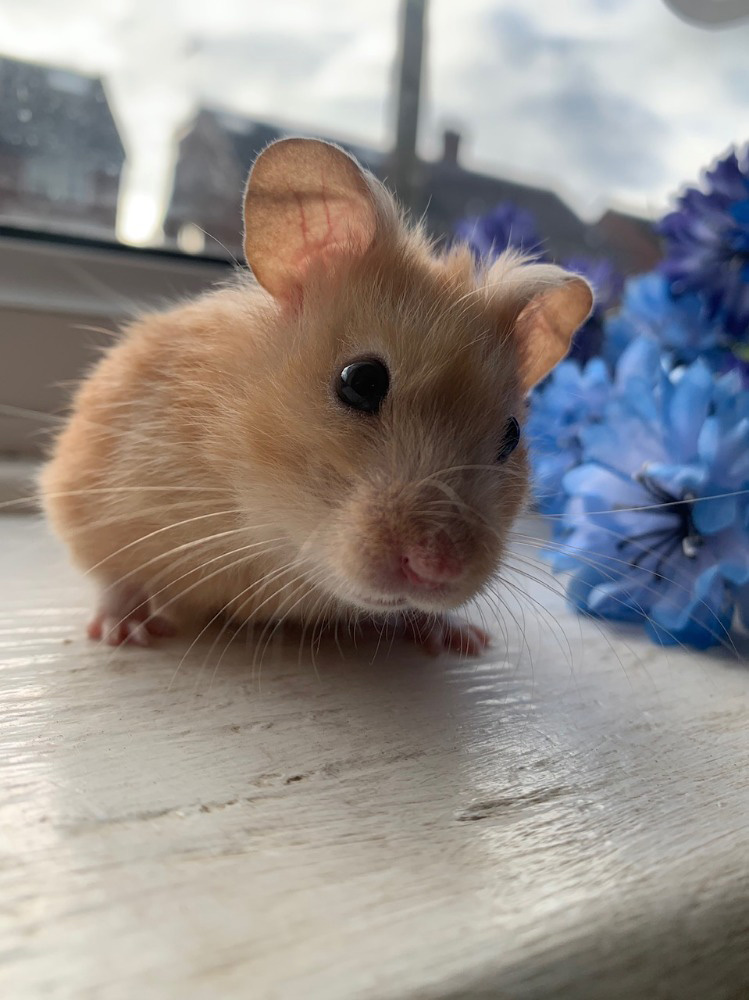Exploring Common Hamster Types
Hamsters are popular pets known for their playful and endearing nature. With various species available, each type comes with its unique traits, colors, and behavior. Choosing the right hamster type for your home can significantly enhance your pet ownership experience. In this article, we’ll explore some common hamster types, their characteristics, and what to consider before bringing one home.
Syrian Hamsters: The Gentle Giants
Syrian hamsters, also known as golden hamsters, are the largest breed among hamster types, often growing up to 6-7 inches in length. Known for their docile demeanor, **Syrian hamsters** are hashtagged #1 pet choice for many families. These hamsters are generally solitary creatures; they prefer to live alone in spacious habitats. One must ensure they have ample bedding, hiding spots, and chew toys for enrichment. The impressive variety in colors, including golden, black, and even banded patterns, makes them visually fascinating pets.
Care Tips for Syrian Hamsters
Caring for a Syrian hamster requires attention to their specific needs. First and foremost, their cages should be equipped with plenty of space, as they are highly active animals. Choose toys that stimulate their curiosity and exercise requirements. Additionally, a proper diet is crucial; a mix of pellets, supplemented with fresh fruits and veggies can keep them healthy. Ensure that the meal schedule aligns with their natural foraging instincts to prevent obesity.

Common Health Issues in Syrian Hamsters
Despite their robust nature, Syrian hamsters can be prone to certain health issues like wet tail, obesity, and dental problems. Regular vet check-ups are essential for maintaining their health. A keen observation for any change in behavior or physical signs can help in early diagnosis. Owners should consult a vet immediately if they notice symptoms such as lethargy, changes in eating habits, or unusual stool consistency.
Dwarf Hamsters: The Tiny Companions
Dwarf hamsters, including the Campbell’s, Roborovski, and Chinese hamsters, generally range from 3 to 4 inches in length. Their small size makes them appealing to those who have limited space. These hamsters can be playful and interact well with humans when handled regularly. However, their fast nature may pose challenges, especially for young children, as they can easily scurry away.
Keeping Dwarf Hamsters Together
While many dwarf hamsters can coexist peacefully, it’s crucial to understand that **Dwarf hamsters** can sometimes display territorial behaviors. When introducing new dwarf hamsters, use a technique called a “split cage.” This allows the hamsters to become familiar with each other’s scent before introducing them directly. Ample space and resources should be provided to prevent conflicts among them.

Nutritional Needs of Dwarf Hamsters
The dietary requirements of dwarf hamsters might differ slightly from their Syrian counterparts. High-quality, fortified food pellets are essential for their growth and wellbeing. Additionally, consider offering occasional treats like mealworms, seeds, or small pieces of fruits. Monitor their weight closely, as dwarf hamsters are more susceptible to obesity due to their smaller size.
Chinese Hamsters: Unique and Curious
The Chinese hamster often surprises owners with its longer body and tail compared to other breeds. This intriguing **Chinese hamster** stands out in pet stores but remains less common than its Syrian and dwarf counterparts. They tend to be more active in the evening, exhibiting fascinating behaviors that can be amusing to observe. Although sometimes skittish, they can be affectionate with regular handling.
Setting Up a Habitat for Chinese Hamsters
Creating a suitable environment for a Chinese hamster involves selecting the right substrate material. Opt for soft bedding that allows for burrowing, as they naturally seek comfort in their environment. Their cage should include toys, tunnels, and safe spaces for them to explore. Ensure the shelter is spacious enough, as overcrowding can lead to stress and behavioral issues.

Behavioral Traits of Chinese Hamsters
Understanding the behavioral traits of Chinese hamsters is essential for developing a good relationship with them. They are known to be burrowers and enjoy creating nests and tunnels in their bedding. Interaction with them can foster trust and affection; extended playtime outside their cage enhances the bond. However, avoid loud noises and sudden movements as these can startle them.
Choosing the Right Hamster for Your Lifestyle
When selecting a hamster type, consider your lifestyle and the commitment required for their care. **Hamster care** demands consistency; research the specific needs of each type can ensure they thrive in your care. Consider factors such as the size of the cage, the amount of daily interaction you can provide, and the space you have available.
Considerations Before Getting a Hamster
Before acquiring a hamster, ask yourself key questions: Are you ready for a long-term commitment? Can you provide ample time for socialization? Do you have space for their proper housing? Understanding the obligations that come with hamster ownership will help cultivate a fulfilling pet experience.

Benefits of Hamster Ownership
Owning a hamster provides several benefits, including companionship and teaching responsibility, particularly for children. Their charming personalities often bring joy and entertainment to households. Additionally, hamsters have lower maintenance needs compared to many other pets, making them a good choice for first-time pet owners or busy individuals.
Key Takeaways
- Various hamster types suit different familes and environmental needs.
- Syrian hamsters are solitary, while some dwarf and Chinese hamsters thrive in pairs or groups.
- Understand the specific care requirements for diet, housing, and socialization.
- Regular health check-ups can help prevent common illnesses in hamsters.
- Hamster ownership can be enjoyable and fulfilling, beneficial for children learning responsibility.
FAQ
1. What is the lifespan of a typical hamster?
The lifespan of a hamster generally ranges between 2 to 3 years. However, with proper **hamster care**, some may live longer, especially dwarfs that receive regular medical check-ups and appropriate nutrition.
2. Do different hamster breeds require different diets?
Yes, although all hamsters primarily thrive on pellets and vegetables, specific proportions for each **hamster type** can vary. For instance, Dwarf hamsters may require a slightly higher caloric intake relative to their size but should still be portioned adequately to prevent obesity.
3. Can I house different hamster species together?
Housing different hamster species together is generally not recommended as it can lead to territorial behavior and stress. Keeping each breed separately ensures their health and comfort, particularly with **Syrian hamsters**, as they are strictly solitary.
4. What should I do if my hamster shows signs of illness?
If your hamster exhibits unusual behaviors like lethargy, lack of grooming, or changes in eating and drinking habits, it’s critical to consult a vet promptly. Early intervention can often lead to better health outcomes and should not be delayed based on the **hamster type**.
5. How often should I clean my hamster’s cage?
Hamsters require their cages to be cleaned at least once a week. Regular spot cleaning ensures a healthy and hygienic environment for your pet. Always use safe cleaning products and replace bedding materials to minimize health risks.
6. What type of toys do hamsters like?
Hamsters enjoy a variety of toys that allow them to chew, climb, and explore. Items such as tunnels, chew sticks, and exercise wheels support their physical activity, promoting a healthy lifestyle.
7. Can I train my hamster?
Yes, hamsters can be trained to some extent! Using positive reinforcement methods such as treats can encourage them to learn simple commands. They can also be taught to use a litter box and recognize their owners over time.
